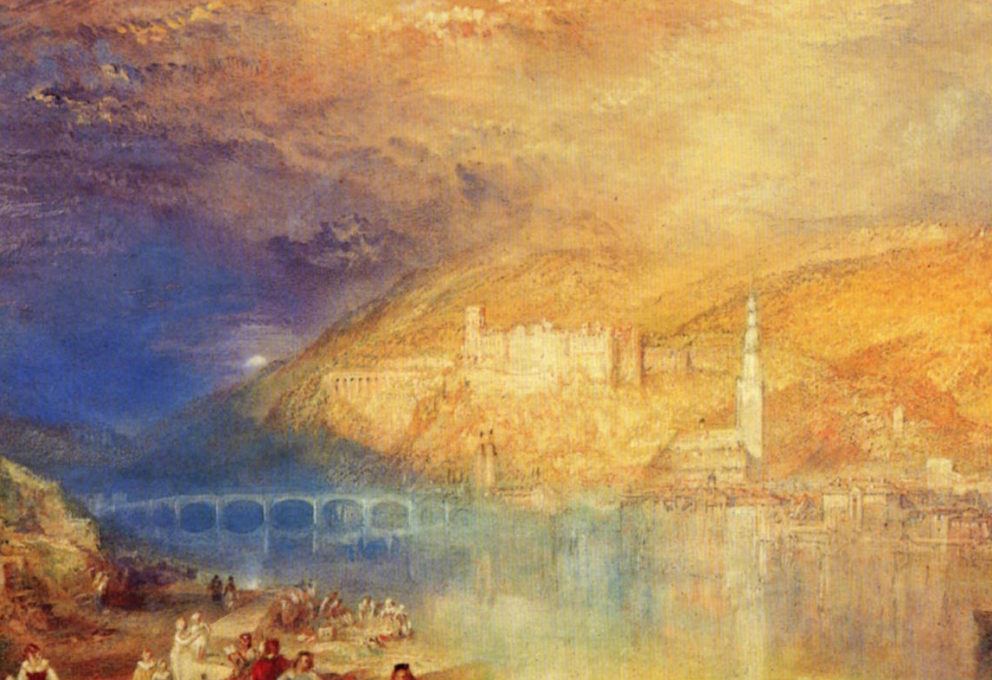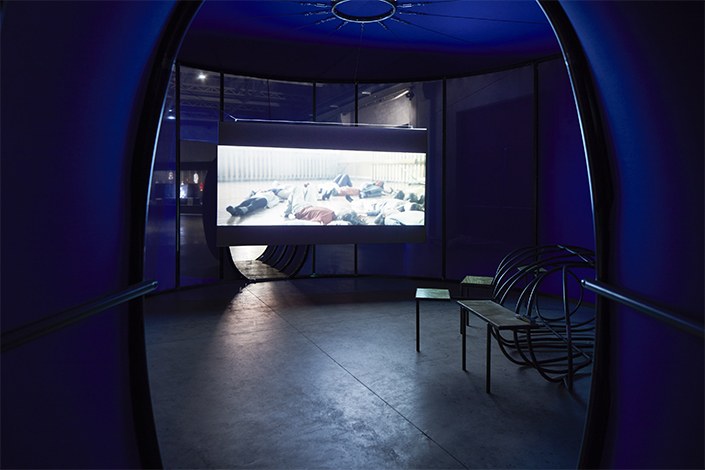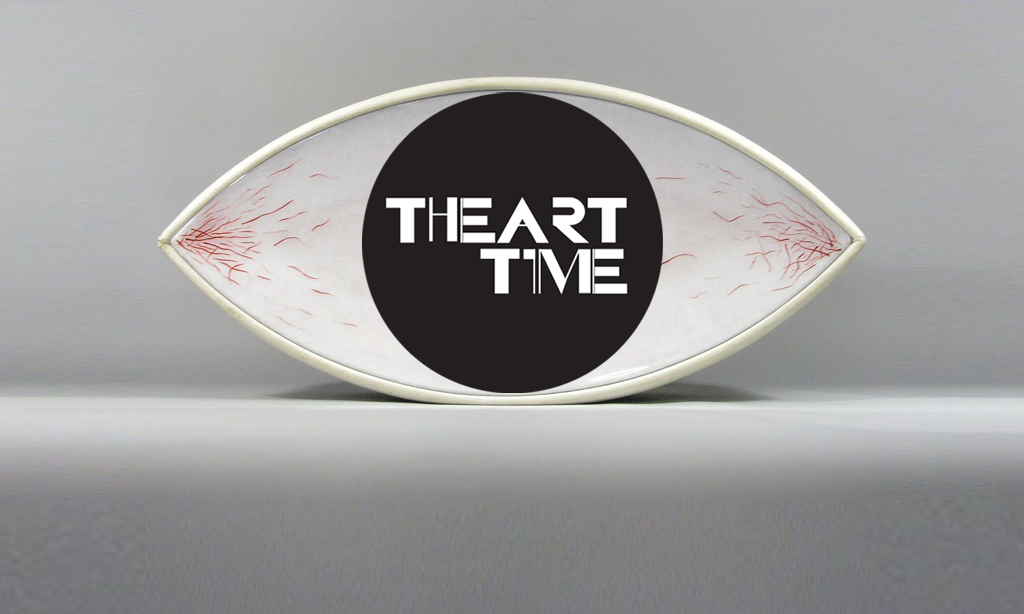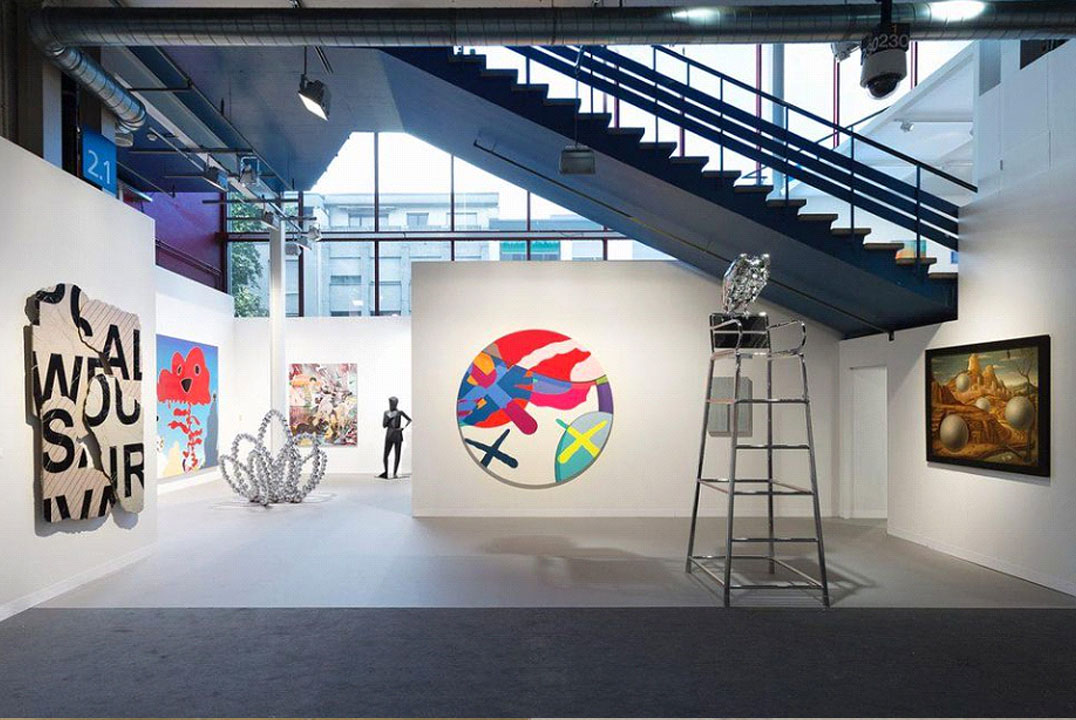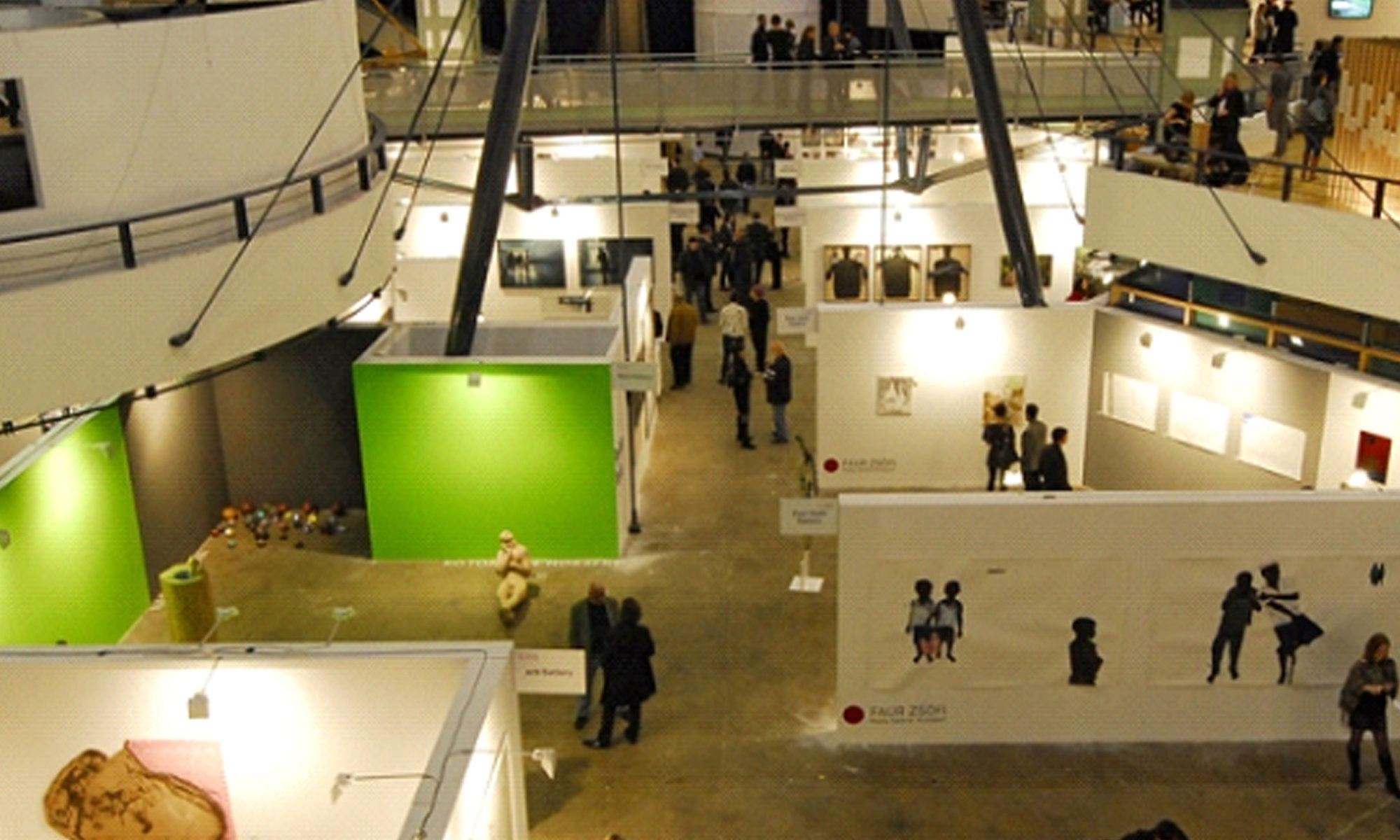Turner, works by Tate, Chiostro del Bramante, Rome, until August 26th. A truly intimate collection, with works known today as ‘Turner Bequest’, many of which come from the artist’s personal studio and have been created over the years for his ‘pure pleasure’, according to the expression of John Ruskin.
Eva Kot’átková
⦁The free exhibition Eva Kot’átková. The Dream Machine is Asleep at the Bicocca Hangar in Milan, until July 22nd. Eva Kot’átková’s work investigates the forces that influence human behavior, as norms and educational systems can generate situations of control. The exhibition presents installations, sculptures, collages and performances, dedicated to the human body seen as a machine and organ caught during sleep, while generating inner worlds parallel to reality.
UNDER THE SIGN OF SATURN. the time of / in ART
The unforgettable text ‘Saturn and Melanconia’ by Erwin Panofsky is the basis of the choice of the name TheArtTime, in which Time certainly prevails over Melancholy, but is also closely linked to it.
They are two connected values. Time flows, leaves traces, the art scratches and soothes with its questions and its offers; melancholy is connatural to the man, who perhaps creates and collects for the same reason: to escape that black humor, that subtle ‘pleasure to be sad ‘inherent in the precarious and mortal nature of the human being.
Time and Melancholy; The time of Art is that time that remains. In this text the author investigated about Renaissance man, centered on himself, but also small in front of the eternal universe; this feeling is more alive than ever even today.
Saturn changes and flows and the sense of smallness is infinite.
In every sector of knowledge, medicine, psychiatry, history, philosophy, religion, theology, alchemy, art, literature, studies on time and melancholy have intensified since the release of this text, precisely because they raise questions that are fundamental to postmodern man.
Even in the modern era , the sense of the ineffability and the cancellation of some identity categories was investigated and expressed.
It is a red thread, Time, which traverses art and holds it back.
Melancholy in Art is not so much anxiety, sadness or fatigue; melancholy indicates above all, within the subdivision of the four Aristotelian humors, a temporary mood, softly pensive, ineffable and nostalgic. It is like the Nostos of Ulysses, which consisted in desiring the return home and the incessant desire to leave again. It is the melancholy of the evening or autumn or, as Shakespeare said, the ‘Melancholy of Moor-ditch’.
Time is something that flees, nostalgia is the eternal desire, beyond space and time, to impress a character of eternal return to experiences, moments, questions, ideas; a possible return through the forms of art.
Melancholia I by Albrecht Durer is that masterpiece of mysterious symbols, mathematics mixed with the sublime Renaissance art, which reveals this artist’s trait: head in his hands, a thoughtful look towards the mysteries of the organic and inorganic world: of life, tout court.
The reason why the artist creates and the collector retains the eternal ideas that those who create them deliver.
The ArtTime is the “newspaper” of this Time, ever changing but eternal.
ARTIST'S AURA in contemporary art according to Dal Lago
We often ask ourselves: is this art? There is no art without Aura.ART CONSULTANT ITALY
The aura is the charisma of the artist, depositary of an idea, beyond the role of technè, a Greek definition of art, still valid but not sufficient.
Technique, but – above all – Art is an idea.
In ‘Theory of Art’, Josè Jimenez explains well how the Idea, the Noesis, the mental process is the basis of most of the twentieth century art, is the real revolution, even more than the abolition of perspective and the creation of Abstract art.
Writes Andy Warhol (guru of Pop and emblem of the risk, according to Arthur Danto, of the end of the Art, with his ‘Brillo Box’, a supermarket box, exhibited in a Museum), in The philosophy of Andy Warhol:
“Some companies were interested in buying my Aura. They did not want my products, they kept telling me: We want your Aura” …ART CONSULTANT ITALY
“I could never understand what they wanted, but they would have been willing to pay a bunch of dollars for it. I thought then that if someone was willing to pay so much, I would have to try to imagine WHAT IT WAS “.
No, Art did not die with the “Brillo box” on display and the Aura not even, Danto retracted years later in another book, stating that it transforms itself, like a mutant, but does not die. Warhol himself speaks of this mystery of the artist’s Aura. Desecrating, ironic and iconic.
Iconic, a key adjective. The Aura, this ineffable essence of an artist, à la Man Ray or à la Piero Manzoni (that was the artist’s breath, but always …a charismatic breath), is certainly Iconic. An artist fixes the charismatic image of artistic creativity in an idea: The Fountain of Marcel Duchamp, the mustache of his Gioconda, the Iron with nails (a menacingly erotic object but also daily useless and dangerous) of Man Ray, to make only few famous examples.
Also the nail planted in the middle of the canvas of George Braque “Vase and Violin” in 1909-10 was an Idea. It was, first, a real object, part of a two-dimensional canvas . Second, indeed, it was an IDEA, with its indisputable iconic Aura.
The examples could be endless, up to the current Damien Hirst with its iconic provocations from the beginning of his work, Jeff Koons with his Puppies and so on…
Alessandro dal Lago writes, in his illuminating text “Mercanti d’Aura”, that the aura is alive and sells well.CONSULTANT ITALY
Museums buy it, collectors want it, the public remains sometimes dismayed, sometimes attracted. It sells.
For us , “wishing machines”, it is the object of desire, a material possession that hides and reveals an immaterial possession thousand times more powerful, because iconic, almost divine in its idea of beauty.
Walter Benjamin opened the gap on the theme of the Aura’s ability to survive the era of artistic technical reproduction in his famous text so far.
The aura of uniqueness that enveloped the classical or traditional work was no longer matched in contemporary art. Today, the Aura defines the aptitude of a work of art to produce a given effect on the public in terms similar to what precisely in philosophy or sociology (see Max Weber) is defined CHARISMA.
Movements such as Dada, Futurism, Cubism were affecting every claim of hieraticity of art, with objects stuck on canvases, poems like SALAD OF WORDS, de-sacralization of the image and so on.
Three major themes can be affirmed according to Del Lago on the loss of the dreaded aura in the twentieth century:ART CONSULTANT ITALY
1-art is de-sacralized, also because of an ever larger public starting from the nineteenth century;
2-this sort of de-sacralization is enhanced by the mechanical reproduction of images;
3-the Avant – gardes, finally, determine almost the funeral of the aura, with their research of materials and languages that come from everyday life. It is the exact opposite of what Art had done up to that moment, sacralizing, creating timeless and non – temporal altars. It now tolerates the “transeunte”(passer-by).
The Aura does not die, just as Art does not die; it does not disappear but itchanges, transforms, evolves.
The Aura of a work is the effect it produces, an effect that changes with the type of work and the type of audience.
Aura and Simulacrum are two terms that can be approached in contemporary art.
The Simulacrum derives from the Latin simulare, meaning statue. In reality, the Simulacrum goes far beyond this.
It is an entity that, although not exclusively for use, goes beyond an idea.
Art, with its charismatic aura, whether classical or contemporary, has always created simulacra. Monna Lisa, for example, the famous Gioconda, is neither the true lady of Florence nor her idea, even if it is both . But it goes beyond: beyond reality and beyond the idea, united to us through that charismatic thing called Aura.
We must add a typical fact of art today: its tendency, like everything in economics, to become BRAND. A ‘branded’ simulacrum, sponsored, promoted wisely, but no less powerful. Today it is the brand itself that wants to be Art, acutely analyzes Dal Lago.
Foucault, to close this quick excursus on the charisma of the idea in contemporary art, has well understood what this Simulacrum is.
It was Pop Art the emblematic Art of our time, as Arthur Danto wrote.
After the Idea in the techniques of the historical avant-gardes, Pop Art is the most powerful thing that represented the art of this time, an art capable of rendering the role of images in our cultural imaginary at best.
The world seen as a giant collection of Simulacra, all the same because they are objects of a universal exchange and all different because life is constantly changing, a sort of supermarket and superfetation of art.
We are, today more than ever (even more than in the time of Warhol, in our time enhanced with Instagram, Pinterest and various social platforms) condemned to images, to live of them, while remaining, for now, it seems, the possibility to choose between them .
The Aura survives because Art becomes so over time, ever more mutating, but as an Art, it remains.
As the charisma is immaterial, what remains is the idea, the values it transmits to us, not the object itself.
Art creates civilization, always.
ART CONSULTANT ITALY
https://www.thearttime.com/it/art-contemporary-reviews-and-interviews/
(Post)Basel Suggestions
The 2018 edition of the Basel fair has just been closed; art, style, market blended together with the highest levels of turnout, attention and tendency.
Four days of artistry, creativity, imagination, vip collectors and worldliness. Art DeLuxe version.
Some highlights of artistic highlights were:
– Lee-Perrotin: the exhibition of the French Bernard Frize in the twinning space Simon Lee + Galerie Perrotin; an adjoining and suggestive space placed on two different floors has hosted the airy and abstract colors of the evocative painter
– History of the art at its climax: tribute to Robert Indiana (and its iconic Love Pop) and double tribute to Sebastian Matta and Marcel Duchamp for the Swiss gallery Gmurszynska, also based in New York,
– 20th century in the foreground: a tribute to the development of trends that marked the twentieth century (Mirò, Picasso, Calder among others) wanted by the London gallery Helly Nahmad
– Picasso superstar: in conjunction with the blockbuster show at the Tate Modern dedicated to the iconic artist, Basel also celebrates Picasso and his women with the Fondation Beyeler: a bronze of lover Dora Maar, three masterpieces and other faceted faces of the Thirties, that literally saw his triumph with legendary female paintings;
– Ruinart and Liu Bolin: the Chinese artist, known as The Invisible Man, was the partner artist of the champagne house for the Basel 2018 edition
– NetJets and street art: after 17 years of partnership between NetJets and Art Basel, the airline collaborates with Oli-B, street artist, painter and illustrator of Brussels; at the NetJets vip lounge of Art Basel collectors lounge, Oli-B has positioned an innovative installation on various surfaces (canvas, paper, wood and wall) with multiple techniques, including sprays, acrylic paints and digital printing techniques
Some comments on the market:
– Numerous influx of European, Chinese and Korean collectors;
– The buyers came from a hundred different countries and four hundred museums and nearly a hundred thousand visitors in terms of public; 239 were the galleries and 4000 artists present
– The sales went well, despite having been flocking for two weeks at New York auctions; Michael Findley, director of the famous NYC Aquavella gallery, told ArtEconomy24 that “Buyers compare prices and want to negotiate, they are informed, they are not interested in arriving first, but in buying works to be preserved over time“.
– Among the historicized artists, the sales records belong to the American Joan Mitchell (Levy Gorvy of New York sold a 1959 Untitled – oil on canvas – for 14 million dollars, Hauser & Wirth a canvas of 1959 for the same amount; Zwirner, a piece from 1959 to 7.5 million dollars ).In view of two important institutional exhibitions in the US in 2019, Mitchell’s prices are destined to rise. Also Louise Bourgeois from Hauser & Wirth was one of the artists who reached a higher value: The Three Graces of 1947 reached 4.75 million dollars; Andy Warhol from Pace with a portrait of the Garland was sold at a price not unveiled.
– Brilliant and ‘social’ young artists in the contemporary section: from Esther Schipper in Berlin there was a great work by Anri Sala created together with refugee children, each of whom the artist asked to bite an apple and observe the traces of the bite. A reflection on one’s own identity, but also on the process of registering refugees. The photographs of the fruits, retouched by brush, were hung at different heights to reproduce the notes on the score of the German national anthem (the price is not prevented).
– The very young Frenchman Jean Marie Appriou (from Eva Presenhuber) pointed out, starting from fiction bases to create figurative sculptures (heads) in traditional materials.
– It was also noted a magnificent Kounellis: with a “untitled” of 1966, a large black rose (selling price 5.5 million dollars). Provenance unknown. (*)
Art Basel is not a fair, it is a symbol – a central event in the art system, so iconic that it even dominates its own content. It is brand, fashion, system, culture and, of course, business.
(*) The sun 24 hours, 24 June 2018, for the quotations of the works; S.A.Barillà.
ART CONSULTANT and the ART MARKET in a sharing economy?
INTRO
For an art consultant, one the most exciting subject is art market change.
Among the most interesting articles read on the art market, the one in June’s The Art Newspaper stands out ; here, Melanie Gerlis deals with the theme of the global economy in relation to the chance of art to prosper and sell.
Because Art, in order to continue to create ideas, must sell. Ça va sans dire. And this is a fundamental concept for an art consultant.
The first staple of his analysis is that the millenials do not seem to show the same gene as the previous generation in terms of collecting.
“Nobody wants to own anything anymore. It is about experiencing things, sharing them and being-in-the-moment. From the digital revolution, algorithms prevail over the physical world “.
POSSESSION OR EXPERIENCE
The statement is not weightless. From a certain point of view, this is a wonderful thing that has helped to flourish crowdsourcing and re-use of material to produce new objects, for example. According to another, it is not good news: the art market relies on the cult of possession. A collector who does not want to own is not a collector.
This shift from ownership to a sort of shared economy, in which companies such as Uber and Airbnb work for example, is on the agenda of important issues for market leaders.
Will the art of the future be more an object of experience? Mark Spiegler, general manager of Art Basel, the most important and trendy fair in the world, says that we should not overestimate this trend of the times that also comes in the art market, but should certainly be taken into account.
There are some positive effects for the art in all this: if on the one hand the ‘fetishization’ of the “single piece” could be decreasing, the works in multiple editions, such as photography, prints and ceramics, are more and more popular and help to expand the attractiveness of the art market.
Furthermore, some Museums invite visitors to share the exhibited works on Instagram, which is once again a sign of democratization of the potential audience for the Arts.
Even the forms of Patronage are changing. If collectors have historically supported artists by acquiring their jobs in the primary market, they are now investing in production directly.
Sharing and supporting becomes more interesting than the acquisition or investment aimed at speculation, as Alain Servais, a member of FRIENDS OF LISTE, says, a brilliant program that reduced the expenses for the gallery exhibitions of the galleries of the Liste art fair of this year.
CONCLUSIONS
Art intermediaries are experimenting with ways of monetizing experiences (there are people who pay up to $ 50 a day for the experience of seeing dealers selling art in Basel during Art Basel).
The point is perhaps to try to quantify how exactly this macroeconomic change will change the art market. It’s a market niche and a handful of good buyers are enough to keep up appearances.
Still, therefore, explains Spiegler, “the galleries and artists who can make buying and possessing art an experience, have a guaranteed natural future”. *
The Jimi Hendrix’s phrase “have you been experienced?” belongs more than ever to the current niche of the economic-artistic universe.
* in Fair Dailies, www.theartnewspaper.com
Louis Vuitton , Jeff Koons
Jeff Koons designs the second collection of Louis Vuitton bags in 2017.
The intersection between two worlds closer and closer is for the second time demonstrated by the Masters , in which Koons, one of the most influential contemporary artists in the art world, emphasizes the personal connection with each of the honored artists.
He said, “When someone walks down the street or sits in a cafe wearing one of these bags, he’s really communicating his love for humanity.”
Beyond the personal affirmations of the Puppies artist, a collection of this type underlines the worldwide tendency to the art brand and in general of every luxury product.
A bag is an object of use that has an added value, when it comes to an icon like Louis Vuitton: prestige, durability, luxury, elegance, style are all symbols that, as philosopher Cassirer would say about the fact that we are symbolic animals , accompany the buyer in the choice of an eloquent and recognizable product like this.
Adding tributes to Art adds eternity and symbolic values to an object that, though durable and prestigious, has certainly nothing to do with the eternity or immortality of a pictorial masterpiece.
From Boucher to Gauguin, from Manet to Monet, from Poussin to Turner: mythical artists present in the collective imagination climbing up on bags , that are equally present in a global fantasy of fashion victims.
Against the deadly fashion , we choose works of art that become pop but that are intertwined with fashion design as in a sort of yin and yang.
‘Brand everywhere’ is the keyword. With the authoritative but also graceful stamp of Monet’s water lilies.
EXHIBITIONS IN PARIS , SUMMER 2018
A very rich summer in Paris for art lovers, with exhibitions of great value and famous talented artists.
On the occasion of the 80s years since ‘Guernica’ has been created, an exhibition is planned at the Musée Picasso until July the 29th; the show studies the history of the famous painting, also deepening the political vision of Pablo Picasso.
The great romantic of French art, Eugène Delacroix is protagonist for Paris 2018 at the Musée du Louvre until July the 23rd.
Monet as a precursor of Abstractism and abstract art is exhibited at the Musée de l’Orangerie until August the 20th: a parallel is drawn between the water lilies of Monet and the Abstract Expressionism of the New York school, from Pollock to Rothko and it is evident that the stylistic choice of his late works are real precursors.
Paris will also celebrate the 100th anniversary of Klimt’s death, with a “Journey to the heart of the Viennese Secession” to the Atelier des Lumières from April the 13th. Another centenary, that of Egon Schiele (died in 1918), will be remembered with an exhibition at the Louis Vuitton Foundation from 3 October.
The heart of the biggest twentieth century masters is in Paris. Not to be missed.
LADY BEECROFT, BRAND AND SACRED BODY, CONNECTIONS
The body: more and more the seat and depositary of an identity trademark, substituted to the face as a physiognomic revealing personality trait, as a field of investigation of what becomes familiar, disturbing, perturbing (or uncanny), to say it à la Freud.
The face, from the Renaissance, was home to the study of the soul, just think of that wonderful masterpiece that is the Double Portrait attributed to Giorgione, exhibited in Rome in Palazzo Venezia. Dated between 1500 and 1510, it is unicum up to Caravaggio; so, in ’79, Ballarin defined this incredibly suggestive work, an involuntary portrait, not idealized, understood as a medium that reveals the soul in its essence, which dissects the deeper meanings of existence by contrasting to academic official portraiture.
The body becomes the reign of Identity, after Freud, it becomes the seat of impulses, of emotions, of a shift of meaning, from its interior to the flesh, to the skin.
Vanessa Beecroft plays with the female body, referring to the Renaissance, through wonderful vestals immersed in white tunics that make them as organic elements of nature, almost diaphanous and transparent, in which the body hidden and at the same time revealed by minimal drapery reaches a choral size, a choir, the eternal feminine that comes from classicism to post-modern, with diaphanous or hidden faces. A sensual mysticism, in performances that are emotional dances in which the ego is in the mirror, a timeless mirror, without doubles, without enigmas, in its material essence that has the breath of eternity.
It also plays more transgressive games. Beecroft is the artist of the bodies whose works escape any classical definition. Performances in which living images, made with half-naked, often immobile, women are a symbol of our contemporaneity, a representation of the costumes of the new millennium told through undressed bodies of professional models, immortalized and stopped through photographs and videos.
The body is absolutely the protagonist.
First, there is a sacred body.
Female beauty is investigated in its many facets, in its physicality, in its relationship with the art of the past. The body is art, the Aura of these performances lies in being the eternal dimensions of the feminine, even in the temporal dimension ‘of passage’ that characterizes them .
The body and the beauty of Beecroft refer to the painting of Botticelli and Lippi, intertwine with autobiographical motifs (and this is always true in a genre like the Performance) and with suggestions deriving from the surrounding space, with rigorous attention to the scenographic system, which makes the performance closer to painting than to actual action.
Sculpture and performance are realized in this sacred altar of appearances, in this choral dimension of Greek memory (and therefore, cathartic) and are further stigmatized with the photographic and video shooting, media expedients that complete the “eternity” connected to her research , mainly aimed at the the female condition, whose medium is precisely ‘the body’.
With the body, it goes through some of the most controversial and intriguing aspects of today’s social and cultural reality, including the relationship between food and sexuality and the obsession with beauty and physical form, to the most tragic consequences of anorexia.
With Body Art the body, considered almost the inexhaustible source of every act of life, tries to regain possession of what has been subtracted from it in the anonymity and the artificiality of the contemporary universe.
The place where Beecroft operates is in the precarious point of intersection between the body itself, played in the first person, and the mechanical recording, between the direct physical activity and the technological image, photos, films, videotapes.
Emblematic of Vanessa’s aesthetic research, Maternity in three moments, in which the black and white of the skin intertwine with the red and black of the garments, in which the theme of equality is intertwined with the theme of the aesthetic value of art (the choice of colors in garments for example), in which three different motherhoods are linked to a dual motherhood, by a double child, compared to traditional sacred maternities, which are upset both in the colors of the child and in the number.
Sacred motherhood is the most inflated and famous visual topos of Western art history from Christianity onwards; in Vanessa Beecroft relives a new Renaissance, understood as a divergent aesthetic value but also a divergent intrinsic value, in which diversity and otherness replace the tradition and the rule.
They are Madonnas crossed by the needle and by the thread of Louise Bourgeois, without a connection to Freud so striking, but certainly a needle and a thread that sew a new feminine garment, that of freedom, while respecting an aesthetic that is however an aesthetics capable of diverging, of differing.
Then, there is a body-brand. Or branded, it can be affirmed. A double interweaving of bodies, double even in color (again, white skin and black skin): whites and blacks acclaimed as a starting point for reflection, and in the ironic spatial arrangement that undoubtedly makes reference to the Louis Vuitton brand. The naked white bodies form the L and the black naked bodies form the V , part of the famous brand’ s symbol.
Beecroft’s reflection in this image is on the identity of the body in Western society dominated by the Brand, by the Fashion system, on the possibility of single identity (individualized to the maximum through the choice of nudity, primitive and archaic, in stark contrast to the contemporaneity and the artifice of the brand) to survive, even if naked bodies fit together so as to celebrate a fake dance choreography that is in fact a tribute to a famous brand, made ancestral.
Nudity and brand fit together in a reference without beginning and without end, without cause or effect: the brand is humanized by the body in flesh & bones, as if it were so alive to be really alive, and the nudity is erased, marbled by being set as a brand. Sum zero: nothing prevails. The plot is ineluctable, art becomes a brand, the brand becomes art, the body becomes art and brand at the same time.
The individual identities are part of a gear that engulfs and crushes, which tends to flatten and empty to make room for artificial and commercial meanings related to the Self; but it is also true that the brand becomes organic and is demystified in this connection with naked meat, a sort of ‘naked meal’, quoting William Burrough. It is not known if Fashion devoures the body or the body unites with it, without losing itself.
Beecroft creates questions and certainly gives aesthetic answers, in which the ‘feel’ is just primary, essential, re-oxygenating.
PABLO PICASSO 1932, Tate Modern, London
-
Nude in Black Armchair, Succession Picasso/Dacs London 2018
‘Picasso, 1932. Love, Fame, Tragedy’: the first personal exhibition that the Tate Modern dedicates to him, doing it in style. Face to face with over 100 paintings, sculptures and drawings, interspersed with photographic material and looks on his private life.
Every myth about Pablo is swept away to read the man and the artist in all its complexity and its facets.
He said: ‘I paint in the same way that some write their autobiography. The paintings, complete or unfinished, are the pages of my personal diary’.
The exhibition is unmissable, curated by Acchim Borchardt-Hume, in collaboration with the Picasso National Museum in Paris.
1932, a very intense year for the father of Cubism.
The exquisite Nude on a black armchair shows a balanced beauty and such sensuality that there is no choice but to stop and watch it. The more you look, the more you see. First we see a naked woman reclining on a black chair, under a proud sun, visible behind a window partially hidden by leaves of an interior plant. Titian, Manet and Matisse respectively with Venus, Olimpia and L’Odalisque with Magnolia are clearly present in the work. Hidden between the lines. Then, the personal story of Picasso emerges: traces of the blue from its first period, disjointed parts of the body that echo the cubist years, lines drawn from its post-war primitivism and that dreamy trait coming from the recent interest in Surrealism.
In reality, in the final analysis, it is his soul that emerges in the masterpiece: hypnotized, poetic, erotic, even sonorous. It is a love painting fluidly emitted in the harmonious lines of the artist and in the balance of his colors.
Through the exhibition, we look at masterpieces but also works, as Will Gompertz writes for BBC News, much less successful works, which is almost a relief, he jokingly writes, given the boundless genius of the artist in question. The result is a brilliant Picasso and a more human, experimental Picasso.
It is certainly an exhibition that offers in vision a sort of ‘what’s going on here?’ , question that concerns the year 1932: it was what perhaps the artist asked himself, in his experiments sometimes successful , sometimes less successful, but certainly so beyond the boundaries to be incomparable for the audacity of the research. An impressive year for the level of work created, no doubt.
One wonders which painter today challenges the vehicle in the same way Picasso was able to do it 80 years ago.
Faced with the works on display, the certainty of the greatness of his being an artist is evident.
1932 was an extraordinary year for Picasso: his paintings reached such a level of sensuality and perfection that definitively decreed his status. It was also an important year from a sentimental point of view: he tried to maintain a balance between his wife Olga Khokhlova and her 11-year-old son and his love affair with Marie-Thérèse Walter, 28 years younger than him.
The exhibition brings to life these complex artistic and personal dynamics through a series of extraordinary works, some of which have never been exhibited before and part of prestigious private collections.


